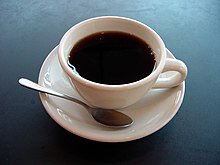Boutique coffee the common sense of espresso 2
1. Hot water of about 90 degrees is ready to infiltrate pressed powder at 9 atmospheric pressures.
The closed pressed powder and the carbon dioxide in the cake with various flavors create great resistance to the infiltration of aquatic products.
This process led to a result, a result that we didn't see at the beginning. The flavor in water and carbon dioxide merged, and at the same time pressed powder began to expand and be permeated by water. At the same time, the taste of the main body of coffee began to release gradually. And this release process determines another parameter of espresso. Fullness.
To simplify, among the two flavors in our taste, sour (and flavor) and fullness (more, bitter), sour is dissolved with water first, that is to say, sour should dissolve fastest with water. Bitterness, on the other hand, is released in a more uniform way.
In the process, the water is still looking for a way out in the coffee pressed powder. And the first batch of water will absorb all the original substances of coffee, which is not only flavour, but also body, but also sugar. More importantly, only by absorbing these ingredients can the later water find a way out (I would love to use the word passageway. But it will confuse channelling)
At the same time, it is worth mentioning that the water still stays on the surface of pressed powder. And the surface layer is the largest part of our pressure on the cake. It is also the most tightly structured process. (conversely, the bottom layer of pressed powder is almost unaffected by tamping. La marzocco has experimented with forces ranging from 5kg to 50kg, with little difference at the bottom. This is also the reason why the automatic cake pressing force on their grinder is very light.
Therefore, at this time, the amount of powder in pressed powder has not yet had an effect on the composition of coffee flavor, but directly related to the coffee flavor is the thickness of grinding.
The reason for the autopsy here is that there is a crucial topic here.
Relatively fine grinding + less powder
Relatively coarse grinding and more powder.
Even if the two cases can extract 20-30ml in 30s, the flavor will be completely different.
In the first stage, the fine pressed powder will stay a little longer, and the most flavor, sugar and acidity will be obtained.
Here is still a small summary around the parameters mentioned in the first chapter.
The first 3-6 seconds of the first phase
The thickness of the grinding determines almost all flavor and part of the plumpness. But it should be said that the fullness here is "insignificant" relative to the long time of 30 seconds.
The amount of powder has almost no effect.
Cake pressing strength-the resistance generated by the surface determines the initial residence time of the water on the surface
Freshness of coffee-the fresher the coffee, the higher the carbon dioxide content, the longer the baking time, the higher the carbon dioxide content, so the greater the resistance.

Important Notice :
前街咖啡 FrontStreet Coffee has moved to new addredd:
FrontStreet Coffee Address: 315,Donghua East Road,GuangZhou
Tel:020 38364473
- Prev

Common sense of coffee powder pressing some information about coffee powder pressing
Objective: to make the loose powder tight by a certain pressure, so as to make the pressurized hot water permeate evenly. Here, several problems are involved, in fact, a vector problem, to put it mildly. The direction of powder pressing and the power of powder pressing.
- Next

Boutique coffee the common sense of espresso
Espresso starts with the first lesson learned two years ago, teaching you how to press the cake, how to observe the flow, and then tell you how to make a qualified espresso. Today, two years later, the learning of espresso is still based on these basic parameters, but more closely related to its own senses. Here, nothing really new, just give it to yourself.
Related
- Beginners will see the "Coffee pull flower" guide!
- What is the difference between ice blog purified milk and ordinary milk coffee?
- Why is the Philippines the largest producer of crops in Liberia?
- For coffee extraction, should the fine powder be retained?
- How does extracted espresso fill pressed powder? How much strength does it take to press the powder?
- How to make jasmine cold extract coffee? Is the jasmine + latte good?
- Will this little toy really make the coffee taste better? How does Lily Drip affect coffee extraction?
- Will the action of slapping the filter cup also affect coffee extraction?
- What's the difference between powder-to-water ratio and powder-to-liquid ratio?
- What is the Ethiopian local species? What does it have to do with Heirloom native species?

